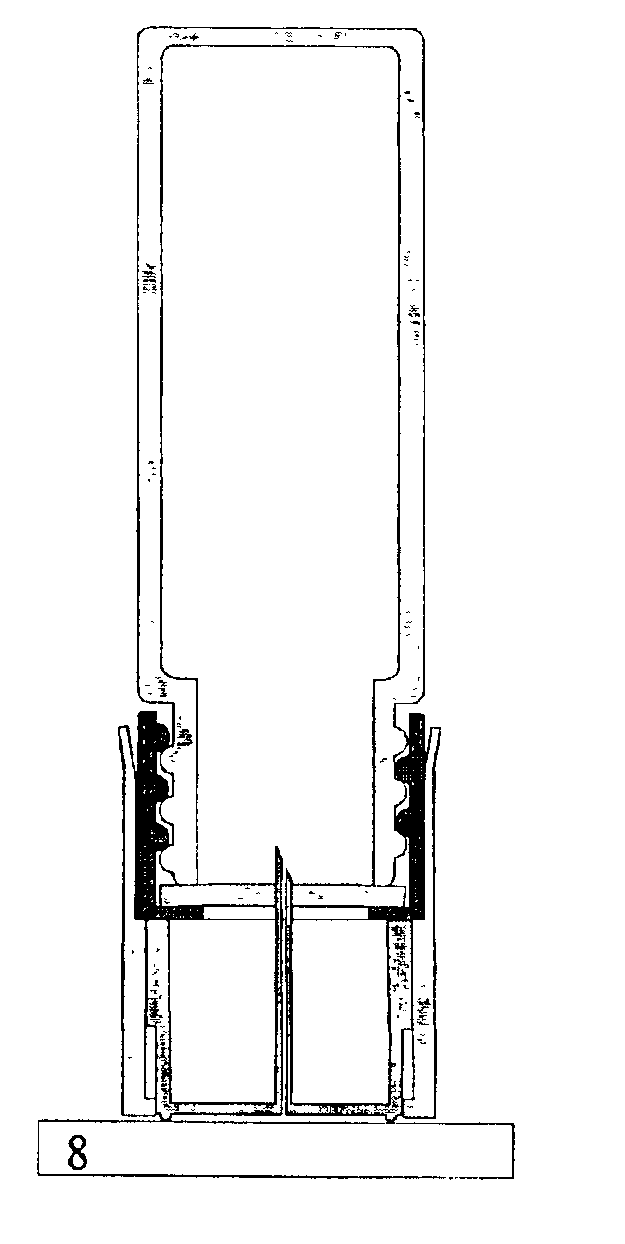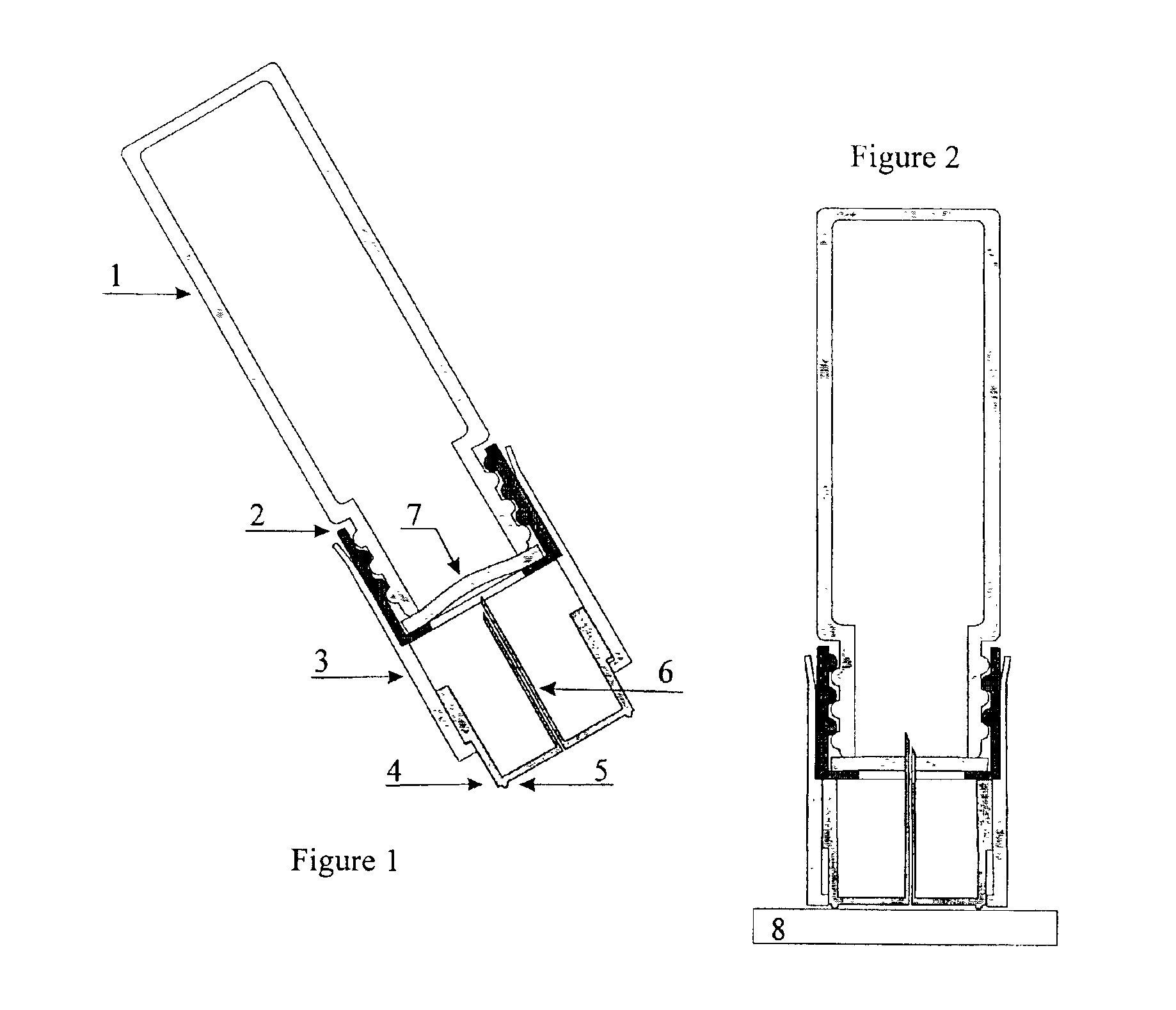Sampler for dust on surfaces
- Summary
- Abstract
- Description
- Claims
- Application Information
AI Technical Summary
Benefits of technology
Problems solved by technology
Method used
Image
Examples
Embodiment Construction
[0011]If pre-evacuated bottles are not being used, a number of sample bottles is evacuated before starting the sampling procedure. For evacuation, the septum of the sampling bottle is punctured by a syringe needle which is connected to a small vacuum pump. This may be a battery powered membrane pump or even, if necessary, a water-jet pump or a small hand pump.
[0012]Sample bottles which are sealed with a screw cap fitted with a so-called septum are commercially available. The septum normally consists of a soft silicone rubber usually coated with a thin layer of PTFE (polytetrafluoroethylene). These sample bottles, which are normally used in chromatography, can be filled and emptied by puncturing with injection needles without the puncture leaving a hole. The closure re-seals, vacuum tight, when the needle is withdrawn. The sample bottles are numbered clearly so that sampling can be easily recorded.
[0013]Evacuated bottles hold the vacuum for a period of time lasting days; if sterile b...
PUM
 Login to View More
Login to View More Abstract
Description
Claims
Application Information
 Login to View More
Login to View More - R&D
- Intellectual Property
- Life Sciences
- Materials
- Tech Scout
- Unparalleled Data Quality
- Higher Quality Content
- 60% Fewer Hallucinations
Browse by: Latest US Patents, China's latest patents, Technical Efficacy Thesaurus, Application Domain, Technology Topic, Popular Technical Reports.
© 2025 PatSnap. All rights reserved.Legal|Privacy policy|Modern Slavery Act Transparency Statement|Sitemap|About US| Contact US: help@patsnap.com


